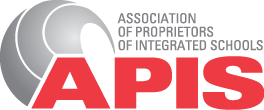As schools return to another academic year people begin to focus on the cost of education to families and the government. There is no doubt that there is a real cost for education. The question is how do we know it is a good investment.
Most societies understand that resourcing or investing in education is fundamental to a strong participating democracy. They also know that while money is important it is not the most important element in measuring our success. It is hard to show a relationship between investment and outcomes in education. In contrast health and justice can show direct links to outcomes in services or improved outcomes.
We agree that money needs to be sufficient to meet the needs of the learner. The challenge is to show that more money makes a difference or that money invested is sufficient.
The Government could argue that it provides sufficient resource and that it is Principals and Boards of Trustees that make the decisions on where to spend it. We know that some Boards squirrel money away and accumulate it while others spend more than they receive and look to the state to help them out. Both cases tend to argue against self-managing schools.
If education is an investment then the investor, the government, might want to direct and control what is spent to see whether it is local decisions that create the cry for more resource or a genuine lack of funding.
Self-managing schools were an epiphany for many Principals in 1989 when they received the opportunity to manage and prioritise funding for the first time. A swing of the pendulum could erode much of the support that has followed self-management.
The challenge is, without destroying some of the positive attributes of localised decision making, to find a way that demonstrates money invested is spent on the purpose of the investment. It is also important that we remind ourselves that money isn’t the panacea for educational change. What really makes the difference is the relationship between the student and the teacher that causes learning to occur.
Finding a funding formula that retains some aspects of local decision making, ensuring that new money is an investment not a sink hole, and remembering that it is the teachers who make the difference will need to be at the heart of this resourcing debate.
Paul Ferris
NZCEO CEO
